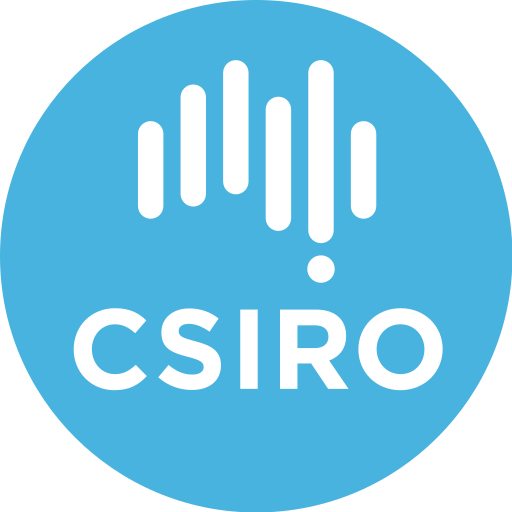Keyword
Multibeam Fisheries Echosounder - EM2040 MKII
4 record(s)
Type of resources
Topics
Keywords
Contact for the resource
Provided by
Formats
Update frequencies
Status
draft
-
This record describes multibeam echosounder data collected on RV Investigator voyage IN2024_E01, 'Trials and Calibrations' which departed Hobart on the 28th October and returned to Hobart on the 6th November 2024. The Kongsberg EM2040-MKII multibeam echosounder was used to acquire seafloor bathymetry, backscatter information and watercolumn backscatter. NOTE: The system was newly installed in Singapore as part of the vessel's mid-life refit and this voyage constituted the formal Sea Acceptance Test (SAT) for the system. The EM2040 provides a 0.4 degree by 0.7 degree angular resolution. The echosounder's nominal frequency is 400 kHz (with a range of 200-700 kHz) and it operated in dual swath mode. Data are stored in *.kmall raw format for bathymetry and backscatter and *.kmwcd format for watercolumn backscatter at CSIRO. There are 135 files totalling 14.9 GB of raw data and 135 files totalling 287 GB of watercolumn data in this dataset. Sound velocity profiles were applied to this data during data acquisition. Bathymetry data contained in *.kmall format are corrected for motion and position. GPS tide was computed using the EGM2008 model and applied to the processed data. Processed data has had outliers removed. Additional information regarding this dataset, including further information on processing streams, is contained in the GSM data acquisition and processing report.
-

This record describes multibeam echosounder data collected on RV Investigator voyage IN2025_V03, titled "COAST‐k – Clean Ocean Air Sampling upwind of Tasmania ‐ kennaook" which departed Hobart on the April 29, 2025 and returned to Hobart on the May 18, 2025. The EM2040MK2 provides a 0.4 degree by 0.7 degree angular resolution. The echosounder's nominal frequency is 400 kHz (with a range of 200-700 kHz) and it operated in dual swath mode. Data are stored in *.kmall raw format for bathymetry and backscatter and *.kmwcd format for watercolumn backscatter at CSIRO. There are 158 files totalling 71.3 GB of raw data and 146 files totalling 424 GB of watercolumn data in this dataset. Sound velocity profiles were applied to this data during data acquisition. Bathymetry data contained in *.kmall format are corrected for motion and position. GPS tide was computed using the EGM2008 model and applied to the processed data. Processed data has had outliers removed. Additional information regarding this dataset, including further information on processing streams, is contained in the GSM data acquisition and processing report.
-
This record describes multibeam echosounder data collected on RV Investigator voyage IN2025_E01, Trials and calibrations, which departed Hobart on the 19th February 2025 and returned to Hobart on the 1st March, 2025. The EM2040MK2 provides a 0.4 degree by 0.7 degree angular resolution. The echosounder's nominal frequency is 400 kHz (with a range of 200-700 kHz) and it operated in dual swath mode. Data are stored in *.kmall raw format for bathymetry and backscatter and *.kmwcd format for water column backscatter at CSIRO. There are 202 files totalling 41.2 GB of raw data and 202 files totalling 556 GB of water column data in this dataset. Sound velocity profiles were applied to this data during data acquisition. Bathymetry data contained in *.kmall format are corrected for motion and position. GPS tide was computed using the EGM2008 model and applied to the processed data. Processed data has had outliers removed. Additional information regarding this dataset, including further information on processing streams, is contained in the GSM data acquisition and processing report.
-
This record describes the End of Voyage (EOV) data archive from the Marine National Facility (MNF) RV Investigator voyage IN2025_E02, titled "IN2025_E02 Trials and Calibrations." The voyage took place between July 26, 2025 and August 02, 2025 (AEST), departing from Hobart and returning to Hobart. For further information please refer to the voyage documentation links. Instruments used and data collected include: Regular measurements: Acoustic Doppler Current Profiler (ADCP; 38, 75, 150 KHz ), Greenhouse Gas Analysers (Picarro), Cloud Condensation Nuclei counter (CCN), Condensation Particle Counters (CPC), Disdrometer, Radon sensor, Mobility particle size spectrometer (MPSS), Black Carbon sensor (Aethalometer), CTD, Fisheries Echosounder (EK80), Multibeam Echosounder (EM712, EM124, EM2040), Sub-bottom Profiler (SBP29), GPS Positioning System, Doppler Velocity Log, Thermosalinographs (TSG), Fluorometer, Oxygen Optode, pCO2, Gravimeter, Ozone Sensor, Atmospheric Temperature, Humidity, Pressure, Wind and Rain sensors, Photosynthetically Active Radiation (PAR) sensor, Precision Infrared Radiometer (PIR), Precision Spectral Pyranometer (PSP), Starboard and Portside Radiometers, Air Sampler, Weather Radar, Expendable Bathythermographs (XBTs). Voyage-specific measurements: Micro Rain Radar (MRR), Video. The archive for the IN2025_E02 EOV raw data is curated by the CSIRO National Collections and Marine Infrastructure (NCMI) Information and Data Centre (IDC) in Hobart, with a permanent archive at the CSIRO Data Access Portal (https://data.csiro.au/), providing access to voyage participants and processors of the data collected on the voyage. All voyage documentation is available electronically to MNF support via the local network. Applications to access voyage documentation by non-CSIRO participants can be made via data-requests-hf@csiro.au All processed data from this voyage are made publicly available through the MNF Data Trawler (in the related links)
